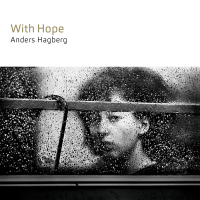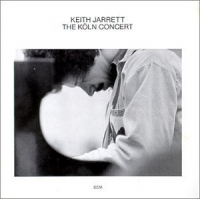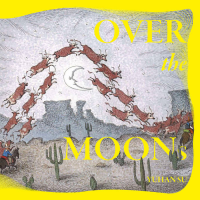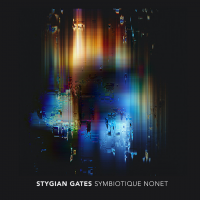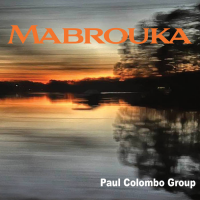Home » Jazz Articles » Multiple Reviews » Black Man's Cry
Black Man's Cry
Back when Billy Harper first started plying his trade things were particularly problematic. Trane had only recently passed and giants like Rollins, Gordon and Shorter were still thriving on the scene. Against these adversarial odds he stuck things out and forged his signature sound, profoundly influenced by the masters, but truly beholden only to his own vision and aesthetic. Artistically lucrative tenures with the bands of Gil Evans, Art Blakey and Lee Morgan along with a four-year stint with the Thad Jones-Mel Lewis Orchestra were leavened by stretches of poverty and unemployment. A handful of recordings document these years, but for the most part the saxophonist’s discography was a sporadic affair. Sadly, the situation remains largely the same today.
Harper appears accustomed to the hardscrabble life. Like many of his peers, he hit the road and relied on touring to generate income. Traveling across Europe, Africa and Asia, he played to audiences that were often more enthusiastic than those at home. His packed ledger of paid dues makes the Far East Tour of 1991 all the sweeter and well deserved. Commissioned by Steeplechase, the three-disc set paints an expansive portrait of a life experience that broadened both the band and the culturally disparate crowds to which they played. Harper’s regular quintet made the trek and each date was a proving ground for their mettle under the rigors of extended improvisation.
Eddie Henderson, a Steeplechase leader in his own right, shares the front line, though the rhythm section is somewhat more obscure. Tanksley, originally from Italy and a colleague of Harper’s since the early Eighties, fronts the rhythm section with a Tyneresque command of chordal grace. Baker’s gig history reads like a jazz who’s who with Joe Henderson, Kenny Barron, Dewey Redman and Shirley Scott among his former employers. Arguably the weakest link in the chain, Spears’ strings serve as somewhat dubious, though always enthusiastic anchor, especially on the trilogy’s first entry.
 Volume 1 touches down in Pusan, Korea, for a concert that actually postdates the second volume by five days. It’s the strongest in terms of compositional variety, though the fidelity of the recording is a bit brambly around the edges. Harper launches off the stage with a four-note melodic figure on “I Do Believe” trailing flittering trills that sound confident and tender all at once. His extended locution never strays far from the melody, but he still manages to rack up a strong tally of variations just the same, interspersed with brusque hard-bitten honks. Henderson comes off as a model of calm and gentility by comparison at first; loosing gauzy notes and only tapering his tone in short brassy bursts for emphasis. Showing yet another facet of the prismatic quintet, Tanksley builds her solo on the backs of resplendent right hand arpeggios while Spears corpulently amplified bass stops up the cracks. For his turn, the bassist gives a valiant effort, but seems slightly amiss and ends up tangling a few of his figures despite Tanksley and Harper’s supportive accents.
Volume 1 touches down in Pusan, Korea, for a concert that actually postdates the second volume by five days. It’s the strongest in terms of compositional variety, though the fidelity of the recording is a bit brambly around the edges. Harper launches off the stage with a four-note melodic figure on “I Do Believe” trailing flittering trills that sound confident and tender all at once. His extended locution never strays far from the melody, but he still manages to rack up a strong tally of variations just the same, interspersed with brusque hard-bitten honks. Henderson comes off as a model of calm and gentility by comparison at first; loosing gauzy notes and only tapering his tone in short brassy bursts for emphasis. Showing yet another facet of the prismatic quintet, Tanksley builds her solo on the backs of resplendent right hand arpeggios while Spears corpulently amplified bass stops up the cracks. For his turn, the bassist gives a valiant effort, but seems slightly amiss and ends up tangling a few of his figures despite Tanksley and Harper’s supportive accents.
Coltrane’s “Countdown” is a simultaneous cover and tribute to the legendary saxophonist. Harper jockeys through the tricky changes at such an advanced speed that the minutes melt away in the seeming blink of an eye. Baker’s taut, but responsive traps play, which is the saxophonist’s sole support for the first track’s half, is another reason behind the absorbing dissolution of time. Tanksley’s “Dance in the Question” opens with Baker’s sliding stated beat and a stout bit of piano thundering from the composer. Harper and Henderson riff robustly above, before dispersing into solo statements starting with the trumpeter’s strident showing atop a descending staircase of chords.
Harper waits in the wings for just the right moment to pounce, leaping in on the strength of a sinewy wail that rises and falls through registers in the throes of a passionate release. Tanksley’s response is awash with expressionistic colors and clusters, her tensile left hand pounding out thematic anchors as her right dances widely and freely. Baker’s cymbal splashes become more splenetic, mixing with tumbling snare rolls to a choppy climax that signals the return of the band. Through it all Spears is mostly lost in the fray and left to cling to the pianist’s lines in order to avoid being completely subsumed.
Harper’s “Insight” takes shape out of an undulating drum preface by Baker that mixes loud and soft to clever dynamic effect. There’s some trouble with the recording balance, but Harper’s driving horn soon sets things straight in a rushing gallop across the shifting rhythm. Spinning off twisting phrases at a racing pace he eventually hands off the melodic thrust to Henderson who starts out off mic, but quickly hits his stride with bright, tightly packed note bursts. Tanksley comps amiably beneath, eventually hardening her attack for a solo that employs another series of nimble right hand flurries. Gusting in from stage side Harper once again takes the helm and his horn spouts another extended stream of braided notes as piano and bass lay out leaving only Baker’s tumbling drums to match his force as foil. The brief, beautifully rendered ballad “If One Could Only See,” goes by all too swiftly as a feature for Tanksley, but leaves the audience primed for the ebullient closer “Croquet Ballet.”
Harper makes certain that the Koreans get their money’s worth on this final entry, sallying forth on a volleying shared riff that expands into a stable platform for impassioned blowing. Harper’s horn swaggers and bites at the theme, interspersing throaty honks and sputters to further please the crowd. Henderson, by contrast, is laidback and loose, an effective tonic to the earlier blazing heat and the rhythm section opens up around him as well on a loosely ambling beat. Spears once again is placed in an uncomfortably denuded spotlight, though this time his fingers sound less frigid and actually craft a solo that seems more on par with the talent of his colleagues, despite a few minor fumblings. The piece’s strolling postlude goes on a bit too long on the same recycled riff, but the audience’s faded applause suggests that they were sold just the same.
 Five days earlier the quintet played the gig in Kaosiung, Taiwan that comprises Volume 2 . Three Harper originals and a well-known standard serve as fodder and the leader commences with a ripping version of one of his signature pieces “Priestess,” a driving minor blues formed on the anchor of Tanksley’s vamping piano and Spears strongly grounding bass line. Harper and Henderson enter together stating the theme with a shared emphatic authority that draws attention away from audible minor cracks in the quintet’s armor. Soon, the saxophonist breaks away for a solo that slides and soars against the eddying harmonic backdrop of Tanksley’s resplendent chords and the restless rhythmic current stoked by Baker’s sticks. Henderson is once again the more sagacious of the horns, measuring his lines with precision and agility, but still finding space to inject thrilling arcs and trills. Spears, better captured in the mix, meshes with the pianist’s stout left hand clusters as her right runs through rapid chain of variations on the theme. The horns return in tandem for a final extended and impassioned press to completion.
Five days earlier the quintet played the gig in Kaosiung, Taiwan that comprises Volume 2 . Three Harper originals and a well-known standard serve as fodder and the leader commences with a ripping version of one of his signature pieces “Priestess,” a driving minor blues formed on the anchor of Tanksley’s vamping piano and Spears strongly grounding bass line. Harper and Henderson enter together stating the theme with a shared emphatic authority that draws attention away from audible minor cracks in the quintet’s armor. Soon, the saxophonist breaks away for a solo that slides and soars against the eddying harmonic backdrop of Tanksley’s resplendent chords and the restless rhythmic current stoked by Baker’s sticks. Henderson is once again the more sagacious of the horns, measuring his lines with precision and agility, but still finding space to inject thrilling arcs and trills. Spears, better captured in the mix, meshes with the pianist’s stout left hand clusters as her right runs through rapid chain of variations on the theme. The horns return in tandem for a final extended and impassioned press to completion.
“Trying to Make Heaven My Home” is Trane-sized in scope and execution, unfolding out over the expanse of nearly a half hour and touching upon an array of extemporaneous interludes over its suite-like duration. The descending melody is directly reminiscent of the Coltrane’s “Spiritual” in its simplicity and emotional earnestness and Harper takes hold of it first as Tanksley sculpts a backdrop for his husky horn to shout and bluster across. Spears and Baker further stoke the rhythmic energy through a tightly interlocking collusion of bass and drums. Henderson sits out for the first third and finds the right space to set down in the wake of his partner’s zealous improvisation. With a muted azure tone he once again acts as a demulcent salve to Harper’s more heated exhortations and delights in a dulcet conversation with Tanksley’s comely keys. The pianist takes her sweet time with her own solo, her hands meshing to create a rhapsodic statement, steeped in funky asides, that the pushes the piece inexorably forward. An ascendant convergence of the horns signals one final trip through the theme that trails out a bit to long.
The band’s switch to the standard conventions of “My Funny Valentine,” almost seems conservative by comparison to what has come before. But Harper shows his mischievous side by tackling the opening minutes unaccompanied. It’s a shrewd decision and one that juxtaposes beautifully with the rest of the band’s entrance led by Tanksley’s lithe chords. Feeding off the support, Harper’s horn affects a full bore cry, peeling off packed register spanning peals punctuated attentively by the pianist and Baker’s strong-sticked accents. A solitary cadenza in line with the piece’s prelude serves as searching denouement and the crowd responds with an appreciative ovation.
Another trip through the emotional ringer, Harper’s “Destiny is Yours,” takes flight on the brawny beat of Baker’s drums and an effectively elastic ostinato by Spears. The saxophonist and the trumpeter soon fall easily into their familiar roles of fire and ice and Tanksley experiments with the waltz-like structures of the piece both solo and as accompanist. It’s a fitting closer to a set already brimming with fervent intensity and an abiding consensus of purpose.
 Volume 3 turns the calendar pages forward two weeks from the date chronicled by the first volume and visits the band in Malaysian capital of Kuala Lumpur. At this stage of the game Harper seems to have decided that longer is better and the program is reduced to a mere three compositions. The extended lengths of the piece supply ample space for improvisation, but also add emphasis to the occasional shortcomings of the players in this type of setting. Sometimes amplified freedom of speech can result in a scarcity of things to say. Still, there’s much to savor here and surprisingly, blemishes and all, these three tracks pack in some of the most spirited and intense blowing of the entire tour trilogy.
Volume 3 turns the calendar pages forward two weeks from the date chronicled by the first volume and visits the band in Malaysian capital of Kuala Lumpur. At this stage of the game Harper seems to have decided that longer is better and the program is reduced to a mere three compositions. The extended lengths of the piece supply ample space for improvisation, but also add emphasis to the occasional shortcomings of the players in this type of setting. Sometimes amplified freedom of speech can result in a scarcity of things to say. Still, there’s much to savor here and surprisingly, blemishes and all, these three tracks pack in some of the most spirited and intense blowing of the entire tour trilogy.
Harper’s Asian sounding “Soran Bushi B.H.,” based on a Japanese folk fishing song, opens with a somber seven-note repeating riff. After a prefatory cycle, suffused with tension and barely capped energy, Tanksley kicks the band into high gear and establishes a brisk tempo in line with Spears and Baker. Henderson takes flight first; eschewing his usual restraint for a protracted solo blisters the polish from his horn with blast furnace heat. Baker is also unbridled and his drums keep the rhythmic current swirling at a cyclone clip, only easing back to steady cymbal support during Tanksley’s wide-ranging keyboard foray mid-piece. Harper takes the lead next and he sounds right at home amidst the passionate din, eventually engaging in a duel with the drummer sans Tanksley and Spears. Tying off his rugged staccato phrases with pigtail blurts and blunt bombastic honks, Harper meets the crashing tide conjured from Baker’s kit head on. It’s a section of sustained and surging ecstatic release that arguably ranks as the most beguiling of the entire set.
“Call of the Wild and Peaceful Heart,” another product of Harper’s sharp compositional intellect, shuttles between passages of perceptive calm and sections of signaling more raucous inclinations. Blending expertly on the opening theme the horns feed off the lush enveloping chording of Tanksley’s dark keys. Her ensuing solo traffics in austere simplicity and guiding pathos and makes stunning use of space and silence. The piano at her disposal isn’t completely in tune, but the authority with which she sculpts her improvisation makes the instrument’s flaws hardly noticeable.
Harper has his say next, digging in for a declamatory statement that testifies in a lean, hard-voiced vernacular atop the strident comping of Tanksley. For his follow up, Henderson falls back into his now customary role as the more temperate of the horns. His solo stretches out with a mellow methodical logic that balances with the responding fervency of the rhythm section. Tanksley moves to the fore once more, but her second solo proves less combustible than its earlier counterpart and it falls to the band en mass to wrap things up with one more dramatic tour through the theme.
Saving the most ambitious and monumental for last, Harper rolls out the half hour plus “Cry of Hunger,” an invocation for the starving masses of the world that unfolds in episodic spurts. A fractured introduction by Tanksley’s spartan ivories connotes an initial mood of disconcerting disconnectedness. It’s a scheme that wears out its welcome, but once the horns and the rest of the rhythm section enter in a spiraling flurry of melodic activity, the tension-stretching silences seem to make more sense. Harper heads the solo charge with yet another exposition that threatens to burst the ligatures of his horn with the amount of gusting breath expended. It’s here where his cry is at its most urgent and insurgent, alternating between strafing chains of notes to more lyrical romanticized legato lines.
Henderson affixes mute and blows smooth and cool, his bright ferrous phrases floating like smoke wisps around Tanksley’s judicious comping and the pianist affects a similar frugality in her solo. Measuring her improvisation in gradual increments that hang together in a melodic whole, she speaks directly to the mixture of hope and despair attendant with the nameless poor who serve as piece’s ascribed subject. Difficulties in coming to a tempo agreement quickly dissolve as Harper’s horn shouts above a spate of breaks by Baker and it’s back to intervening silences that erupt into crescendoing polyphonous blasts. Prior to the close, Harper’s spoken words give thanks and announce the band members in succession. The tactic subtracts some of the built up emotional weight of the piece, but also delivers convenient source of closure on the trilogy as a whole.
Visit Steeplechase on the web.
![]()
Personnel and Tracks:
Personnel (on all recordings): Billy Harper- tenor saxophone; Eddie Henderson- trumpet; Francesca Tanksley- piano; Louie Spears- bass; Newman T. Baker- drums.
On Tour of the Far East, Vol. 1
Tracks: I Do Believe (15:26)/ Countdown (5:12)/ Dance in the Question (13:41)/ Insight (11:21)/ If One Could Only See (5:00)/ Croquet Ballet (14:51).
Recorded: April 27, 1991, Pusan, Korea.
On Tour of the Far East, Vol. 2
Tracks: Priestess (17:38)/ Trying to Make Heaven My Home (25:52)/ My Funny Valentine (9:12)/ Destiny is Yours (12:34).
Recorded: April 22, 1991, Kaosiung, Taiwan.
On Tour of the Far East, Vol. 3
Tracks: Soran Bushi, B.H. (23:45)/ Call of the Wild and Peaceful Heart (20:46)/ Cry of Hunger (31:39).
Recorded: May 11, 1991, Kuala Lumpur, Malaysia.
Tags
PREVIOUS / NEXT
Support All About Jazz
 All About Jazz has been a pillar of jazz since 1995, championing it as an art form and, more importantly, supporting the musicians who make it. Our enduring commitment has made "AAJ" one of the most culturally important websites of its kind, read by hundreds of thousands of fans, musicians and industry figures every month.
All About Jazz has been a pillar of jazz since 1995, championing it as an art form and, more importantly, supporting the musicians who make it. Our enduring commitment has made "AAJ" one of the most culturally important websites of its kind, read by hundreds of thousands of fans, musicians and industry figures every month.






